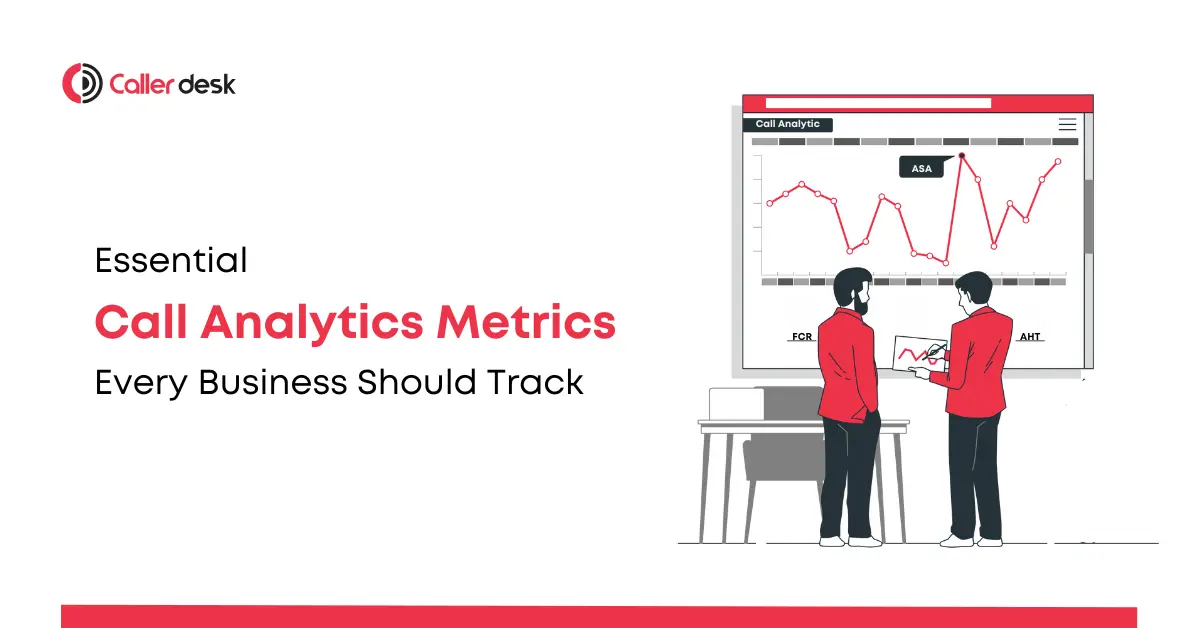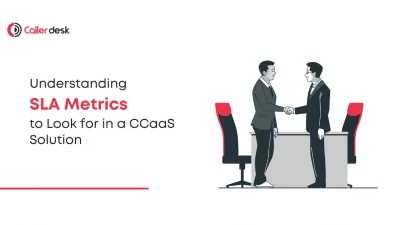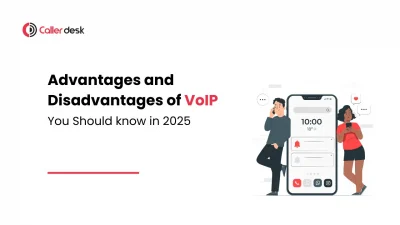Did you know that 60% of customers are willing to pay more for excellent customer service? Yet, for many businesses, delivering a seamless and satisfying customer experience remains a challenge. Long wait times, unresolved issues, and poor communication are common pain points that can drive customers away.
What separates high-performing businesses from the rest is their ability to measure and act on the right call analytics metrics. These metrics provide invaluable insights into how well your call center is performing, how satisfied your customers are, and where improvements are needed.
Imagine a world where every call is handled efficiently, customers leave happy, and your business reaps the rewards of loyalty and increased revenue. This isn’t just a dream—it’s achievable with the right approach to call analytics.
In this guide, we’ll explore key call analytics metrics, why they matter, and how to use them to overcome common challenges, enhance customer satisfaction, and drive business success.
The Importance of Call Analytics Metrics
Why Data-Driven Decision-Making Matters
Tracking call analytics metrics is more than just a way to measure performance—it’s the foundation of a successful, customer-centric business. Here’s why it’s essential:
- Understand Customer Expectations: Metrics like First Call Resolution (FCR) reveal how well you’re meeting customer needs.
- Boost Agent Productivity: Metrics such as Average Handling Time (AHT) highlight areas where agents can improve.
- Enhance Customer Retention: Satisfied customers are more likely to return and recommend your business.
- Drive Cost Efficiency: Monitoring metrics like Cost Per Call (CPC) helps you streamline operations and save money.
Quantifiable Benefits of Call Analytics
Consider these real-world examples:
- A retail business reduced call abandonment rates by 20% after using predictive analytics to adjust staffing, leading to a 15% increase in customer satisfaction.
- A telecommunications company improved FCR by 25% by investing in agent training, saving $30,000 in operational costs within a quarter.
Key Insight: Businesses that actively track and optimize call metrics experience improved performance, higher satisfaction rates, and measurable ROI.
Common Challenges Addressed by Call Analytics
1. High Call Abandonment Rates
The Problem: Long wait times cause customers to hang up, resulting in missed opportunities and dissatisfaction.
The Solution: Track Average Speed of Answer (ASA) to identify bottlenecks and optimize staffing during peak hours.
2. Low First Call Resolution (FCR)
The Problem: Customers must call back multiple times to resolve an issue, leading to frustration.
The Solution: Use data to pinpoint recurring problems and enhance agent training to resolve issues on the first attempt.
3. Inefficient Operations
The Problem: Long Average Handling Times (AHT) and high Cost Per Call (CPC) indicate inefficiencies in processes.
The Solution: Leverage CallerDesk’s automation tools to streamline workflows and reduce costs.
Pro Tip: Identifying and solving these challenges with call analytics can significantly enhance both customer satisfaction and operational efficiency.
Key Call Analytics Metrics to Track
1. Average Speed of Answer (ASA)
What It Measures:
The average time it takes for an agent to answer an incoming call.
Why It Matters:
Customers value their time. A high ASA not only frustrates customers but also increases call abandonment rates.
How to Improve ASA:
- Staff Smartly: Use CallerDesk’s predictive analytics to ensure adequate staffing during busy periods.
- Optimize Routing: Streamline your IVR system to connect customers to the right agent faster.
- Offer Callbacks: Allow customers to request a callback instead of waiting in the queue.
Pro Tip: Aim for an ASA of under 20 seconds to create a positive first impression.
2. First Call Resolution (FCR)
What It Measures:
The percentage of customer issues resolved on the first interaction without follow-ups or escalations.
Why It Matters:
FCR directly impacts customer satisfaction and operational efficiency. A high FCR rate indicates effective problem-solving and a customer-centric approach.
How to Improve FCR:
- Empower Agents: Provide agents with decision-making authority to handle issues quickly.
- Use Insights: Analyze common escalation patterns to address knowledge gaps or system inefficiencies.
- Enhance Training: Focus on comprehensive product knowledge and communication skills.
Pro Tip: A good benchmark for FCR is between 70% and 75%.
3. Average Handling Time (AHT)
What It Measures:
The total time an agent spends on a call, including post-call tasks like documentation.
Why It Matters:
Balancing call length is critical. While short AHT indicates efficiency, overly short calls may suggest incomplete issue resolution.
How to Optimize AHT:
- Automate Post-Call Tasks: Use CallerDesk to handle repetitive processes like ticket creation.
- Provide Knowledge Bases: Equip agents with quick access to FAQs and solutions.
- Identify Bottlenecks: Analyze call recordings to pinpoint where time is being lost.
Pro Tip: Regularly review AHT trends to strike the right balance between efficiency and customer satisfaction.
4. Call Abandonment Rate
What It Measures:
The percentage of customers who hang up before speaking to an agent.
Why It Matters:
Abandoned calls represent missed opportunities to engage with customers or resolve their concerns.
How to Reduce Abandonment Rates:
- Use AI-Powered Forecasting: Predict peak periods and adjust staffing accordingly.
- Simplify IVR Menus: Make it easy for customers to reach the right department.
- Communicate Wait Times: Let customers know how long they’ll need to wait.
Pro Tip: Keep abandonment rates below 5% to maintain high engagement.
5. Customer Satisfaction Score (CSAT)
What It Measures:
CSAT captures customer satisfaction through post-call surveys.
Why It Matters:
This metric offers direct feedback from customers about their experience, helping you identify strengths and weaknesses.
How to Improve CSAT:
- Personalize Service: Use CallerDesk’s CRM integrations to tailor interactions based on customer history.
- Act on Feedback: Regularly review survey responses to implement improvements.
- Invest in Empathy Training: Teach agents to build rapport and resolve issues with care.
Pro Tip: A CSAT score above 80% is considered excellent.
6. Repeat Call Rate
What It Measures:
The frequency of customers calling back about the same issue.
Why It Matters:
High repeat call rates indicate unresolved problems, leading to frustration and wasted resources.
How to Reduce Repeat Calls:
- Analyze Patterns: Use CallerDesk to identify common reasons for repeated issues.
- Address Root Causes: Improve processes or train agents to resolve problems more effectively.
- Offer Clear Solutions: Ensure customers fully understand the resolution during the first call.
Pro Tip: Keep repeat call rates below 15% for a smoother customer experience.
Choosing the Right Call Management Software
When it comes to tracking and optimizing these metrics, having the right tools is essential. CallerDesk offers:
- Real-Time Analytics: Monitor performance metrics as they happen for instant improvements.
- AI-Powered Insights: Uncover trends and identify opportunities for growth.
- Seamless Integrations: Connect with CRMs and other tools for a unified view of customer interactions.
Take Action: Schedule a free demo with CallerDesk today to see how our platform can transform your call center.
Conclusion
Tracking call analytics metrics like ASA, FCR, and CSAT is essential for delivering exceptional customer service and optimizing call center operations. By understanding and acting on these metrics, businesses can enhance efficiency, improve satisfaction, and achieve measurable success.
Ready to take your call center to the next level?
- Schedule a Free Demo: Discover how CallerDesk can help you monitor and optimize these metrics.
- Download Our Free Guide: Get insights on the “Top 5 Call Center Mistakes and How to Avoid Them.”
- Contact Us: Speak with our experts for personalized recommendations today!
Frequently Asked Questions
1. What are call analytics metrics, and why are they important for businesses?
Call analytics metrics are key performance indicators (KPIs) that measure various aspects of a call center’s performance, such as response times, issue resolution rates, and customer satisfaction. These metrics are crucial for identifying inefficiencies, improving agent productivity, enhancing customer experiences, and driving business growth.
2. How can tracking Average Speed of Answer (ASA) improve customer satisfaction?
ASA measures how quickly agents answer incoming calls. A low ASA ensures that customers aren’t kept waiting, reducing frustration and abandonment rates. By optimizing staffing levels and streamlining call routing, businesses can maintain a positive first impression and improve overall satisfaction.
3. What is First Call Resolution (FCR), and how does it impact customer loyalty?
FCR tracks the percentage of issues resolved during the first customer interaction without the need for follow-ups. A high FCR demonstrates efficiency and builds trust, as customers prefer quick and effective resolutions. Improved FCR rates lead to increased loyalty and a better reputation.
4. How can CallerDesk help reduce repeat call rates?
CallerDesk provides insights into recurring issues that cause customers to call back. By analyzing these patterns, businesses can address root causes, improve agent training, and enhance processes to resolve issues effectively on the first call, reducing repeat call rates.
5. What tools does CallerDesk offer to improve Average Handling Time (AHT)?
CallerDesk offers automation features to streamline post-call tasks, such as ticket creation and data entry. It also provides agents with quick access to knowledge bases and CRM integrations, enabling them to resolve issues faster without compromising quality.
6. Why is tracking Call Abandonment Rate important, and how can it be improved?
Call abandonment rates indicate how often customers hang up before speaking to an agent. High rates often signal long wait times or poor IVR systems. Businesses can reduce abandonment by using predictive analytics to staff appropriately, simplifying IVR menus, and offering callback options.
7. How does Customer Satisfaction Score (CSAT) benefit call centers?
CSAT provides direct feedback from customers about their experience, highlighting what’s working and where improvements are needed. High CSAT scores indicate that agents meet or exceed customer expectations, while low scores reveal areas for process enhancements or additional training.





